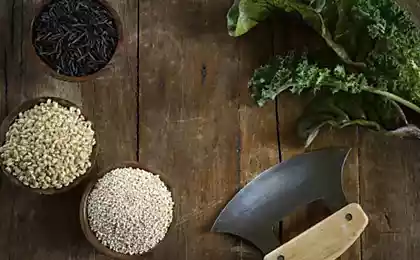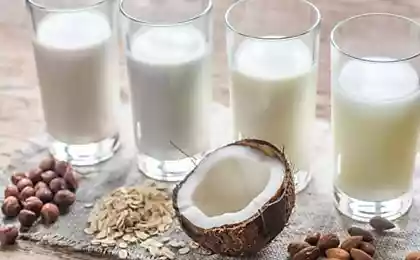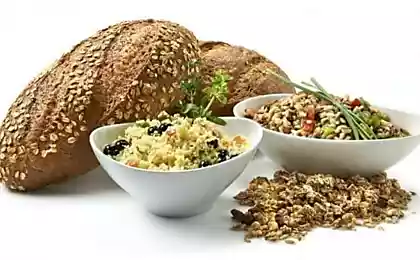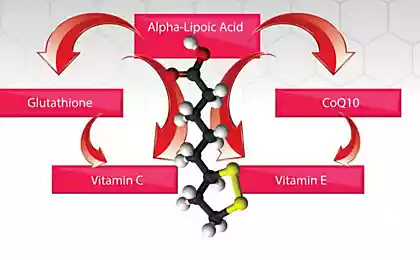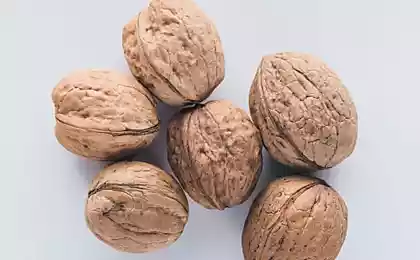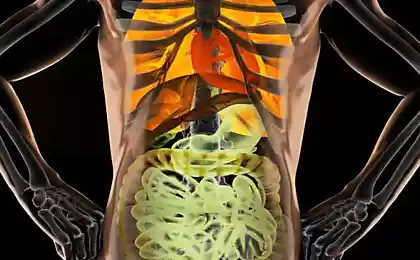628
Phytic acid: breads
All the plants we can be divided into two groups. Some plants want to eat them, they need it for reproduction. They are bright, easy to digest, delicious. And they usually do not contain toxic substances that impede absorption. It berries, fruits, vegetables.
The second group of plants does not want to be eaten. And it is protected by hiding the fruits in the shell, protecting the ears asthami and spines. And the seed itself accumulates special substances that make it malosedobnaya for animals and disrupt the digestive process. Such compounds are called antinutrients. Yes, plants don't like it when I eat their children, and they are protected.
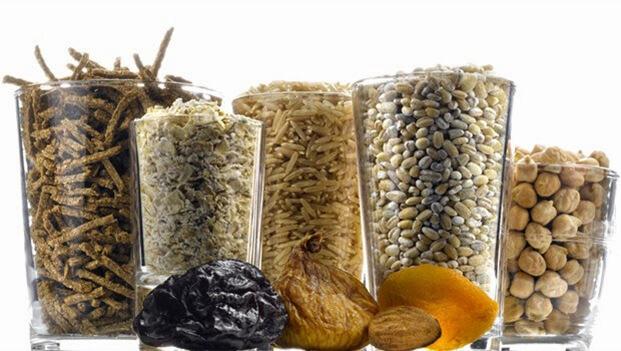
Whole grains, plenty of beans, natural nuts and raw seeds, bran and germ — I think these attributes of a healthy diet bring us a solid good? Whatever. And even quite the contrary. In cereals, legumes, nuts, seeds, and some root vegetables lurking phytic acid — antinutrient, which not only blocks bound to the phosphorus, but the "steals" we have such important elements as calcium, magnesium, iron and zinc.
The seeds of most grasses phytin is concentrated in the aleurone layer and in the seeds of dicotyledonous plants, including oilseeds and pulses, it is uniformly distributed throughout the volume of the grains. So it is a lot like in whole grain and refined products.
Phosphorus is a mineral necessary for healthy bones and teeth.
Phytic acid is the main storage of phosphorus in plant tissues, particularly in the shell of cereals and other seeds. But phosphorus is built into the molecule of phytic acid is so strong that most animals (except ruminants) and humans, this trace mineral is not bioavailable.
In addition, phytic acid and phosphorus, the "rays" of this, like a snowflake, the molecules associated with joy (halibut) other needed minerals — calcium, magnesium, iron and zinc, thus hindering their absorption.
In 2003, the study examined changes in the absorption of iron after removal of phytic acid from various products. Note the chart that displays the results. That is, for example, in wheat without phytic acid iron absorption at 1160 % more than usual. In other words, iron absorption was improved about twelve times. Therefore, all the numbers of inorganic substances are not meaningful, unless these foods contain a lot of phytic acid.
But that's not all. Phytic acid inhibits the enzyme necessary for digestion, such as pepsin and trypsin (break down proteins) and amylase (breaks down starch to sugars).
It is clear that from time to time to treat yourself to a handful of nuts or brown rice — not a crime. But for people eating mostly whole grains and legumes (out of necessity or for dietary reasons), phytic acid causes very hard mineral deficiencies.
A bowl of oatmeal for Breakfast, a serving of brown rice for lunch and hummus with bread for dinner is a guaranteed way to get the bad teeth, osteoporosis and digestive problems. This is particularly a problem for vegans who get a hard vitamin and trace element deficiency.
Nazvanie bran should, according to "nutritionists", to enrich the diet in fiber to promote weight loss. But really, if you long to follow such a diet, it will lead to severe loss of bone mass and can cause some serious intestinal diseases (e.g. irritable bowel syndrome or Crohn's disease).
But it is not necessary to rush to the kitchen and destroy all stocks of cereals, stomp legumes and cereals. You just need to know how phytic acid to fight to keep its amount to a minimum or, if possible, at least minimize the harm caused by it.
Where is phytic acid?
As already mentioned, the phytic acid present in legumes, seeds, nuts, and grains — especially bran and outer shell. So, up to 80% of the phosphorus of cereal accounted for by phytin phosphorus, which is not subject to absorption.
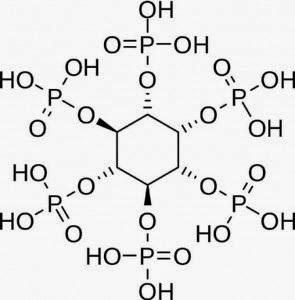
Phytic acid
When the diet is present a substantial amount of phytic acid in the body binds phytic acid with calcium, forming insoluble complexes — chelates. In other words, we don't get fluoride and lose calcium. Moreover, studies show. What we absorb is 20% more zinc and 60 percent more magnesium in the absence of phytic acid.
The amount of phytic acid in foods differs and depends not only on species but also on how and where it was grown. So, more phytic acid in foods grown using modern vysokovoltnyh fertilizers.
Seeds and bran contain the highest amount of phytic acids in 2-5 times more than even some types of soy that are known to be very difficult to digest without the long fermentation. We all remember the craze of oat bran? So this is a sure recipe for loss of bone mass digestive diseases provoked by the high content of phytic acid. Unfermented cocoa beans are also very rich in phytic acid, like coffee.
Harm to the health
A diet rich in phytic acid, the mineral is fraught with failure. In populations where cereals are the main provider of calories, widespread rickets and osteoporosis.
No less a problem is the ability of phytic acid to block zinc and iron. For example, one study showed that a wheat roll containing 2 mg phytic acid inhibited zinc absorption by 18%, 25 mg of phytic acid by 64% and 250 mg — already at 82%. So the bun! Nuts have a marked inhibitory effect on iron absorption.
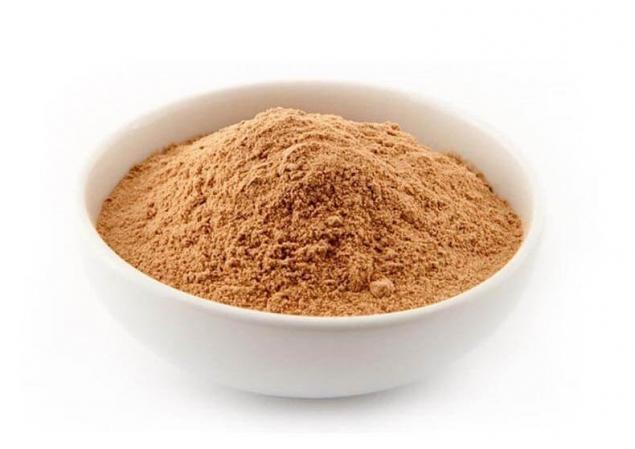
Vegetarians often consume more iron than omnivores. However, they also consume more of the antinutrients, including phytic acid, which reduces the amount of iron available for metabolism. Consumption of 5-10 mg of phytic acid can reduce iron absorption by 50%. Therefore, followers of a vegetarian diet need to consume more iron than omnivores (33 mg for a vegetarian to 18 mg for omnivores).
In the long run the diet is poor in minerals (or rich in phytic acid, and especially both), leads to a slower metabolism. The body goes into the mode of mineral hunger — the body is configured to use as little as possible of scarce substances.
The diet rich in phytic acid, an adult can live for decades, narutosama the child's body with such a diet poses a serious threat. Rich in phytic acid diet deprives them of calcium and phosphorus, which leads to weak bone development, short stature, rickets, narrow jaws and unhealthy teeth; lack of zinc and iron causes the anemia and impaired cognitive development
The phytic acid
Product
[% minimum dry]
[% maximum dry]
Flax seed
2.15
2.78
Sesame flour
5.36
5.36
Almonds
1.35
3.22
Brazil nuts
1.97
6.34
Coconut
0.36
0.36
Hazelnuts
0.65
0.65
peanuts
0.95
1.76
walnut
0.98
0.98
Corn
0.75
2.22
Oats
0.42
1.16
Oatmeal (cereal)
0.89
2.40
Brown rice
0.84
0.99
White rice
0.14
0.60
Wheat
0.39
1.35
Wheat flour
0.25
1.37
Wheat germ
0.08
1.14
Whole wheat
wheat bread
0.43
1.05
Beans
2.38
2.38
Chickpeas
0.56
0.56
lentils
0.44
0.50
Soy
1.00
2.22
Tofu
1.46
2.90
Soy beverage
1.24
1.24
Soy protein concentrate
1.24
2.17
Potatoes
0.18
0.34
Spinach
0.22
NR
Experiments Edward Mellanby etc.
In 1949, the researcher Edward Mellanby demonstrated demineralizers action of phytic acid. In their experiments on dogs, he discovered that vysokovoltnyh cereal consumption inhibits bone growth and disrupts the metabolism of vitamin D leading to rickets and nedostroennom bone tissue.
Vitamin D can mitigate the deleterious effect of phytic acid, but according to Mellanby, "diets rich in phytic acid, perfect bone formation can be achieved with adequate involvement of calcium in the diet rich in vitamin D".
Phosphorus from food (at least cereals) requires a certain amount of calcium for binding. The authors of the article recalls the traditional synergistic combination of sourdough bread and cheese. Historically, the cultivation of cereals is always accompanied by growing dairy cattle.
Interestingly, experiments, Mellanby showed less decalcification action unbleached flour and white rice compared to whole grains that contain more of the minerals, but also a greater amount of phytic acid. Other experiments demonstrated that the ultimate absorption of minerals from whole grains is equal to or below the absorbability of minerals from milled rice and white flour.
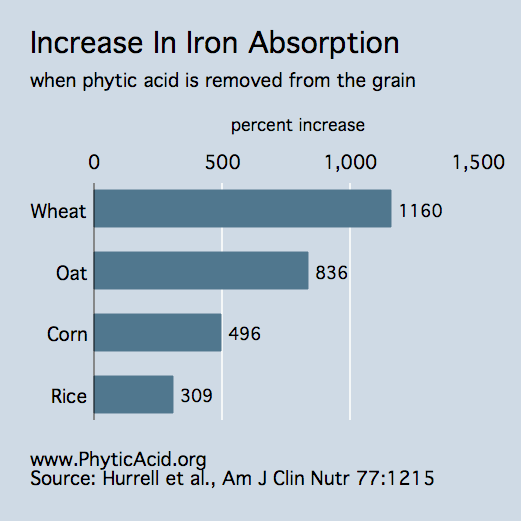
Increase intake of iron without phytic acid
Other studies have shown that adding ascorbic acid can significantly counteract inhibition of iron assimilation by phytic acid. So, anti-iron properties of phytic acid was neytralizuya vitamin C from Kale.
Toy subconscious — the real cause of weight gainstarts with AGING of the ENDOCRINE SYSTEM
A study published in 2000 indicates that vitamin a and beta-carotene form a complex with iron, keeping it soluble and preventing the inhibitory effect of phytic acid on its absorption. Another reason to add to the porridge and carrots with oil.published
Author: Andrey Blueskin
Source: www.beloveshkin.com/2015/02/blog-post_83.html
The second group of plants does not want to be eaten. And it is protected by hiding the fruits in the shell, protecting the ears asthami and spines. And the seed itself accumulates special substances that make it malosedobnaya for animals and disrupt the digestive process. Such compounds are called antinutrients. Yes, plants don't like it when I eat their children, and they are protected.

Whole grains, plenty of beans, natural nuts and raw seeds, bran and germ — I think these attributes of a healthy diet bring us a solid good? Whatever. And even quite the contrary. In cereals, legumes, nuts, seeds, and some root vegetables lurking phytic acid — antinutrient, which not only blocks bound to the phosphorus, but the "steals" we have such important elements as calcium, magnesium, iron and zinc.
The seeds of most grasses phytin is concentrated in the aleurone layer and in the seeds of dicotyledonous plants, including oilseeds and pulses, it is uniformly distributed throughout the volume of the grains. So it is a lot like in whole grain and refined products.
Phosphorus is a mineral necessary for healthy bones and teeth.
Phytic acid is the main storage of phosphorus in plant tissues, particularly in the shell of cereals and other seeds. But phosphorus is built into the molecule of phytic acid is so strong that most animals (except ruminants) and humans, this trace mineral is not bioavailable.
In addition, phytic acid and phosphorus, the "rays" of this, like a snowflake, the molecules associated with joy (halibut) other needed minerals — calcium, magnesium, iron and zinc, thus hindering their absorption.
In 2003, the study examined changes in the absorption of iron after removal of phytic acid from various products. Note the chart that displays the results. That is, for example, in wheat without phytic acid iron absorption at 1160 % more than usual. In other words, iron absorption was improved about twelve times. Therefore, all the numbers of inorganic substances are not meaningful, unless these foods contain a lot of phytic acid.
But that's not all. Phytic acid inhibits the enzyme necessary for digestion, such as pepsin and trypsin (break down proteins) and amylase (breaks down starch to sugars).
It is clear that from time to time to treat yourself to a handful of nuts or brown rice — not a crime. But for people eating mostly whole grains and legumes (out of necessity or for dietary reasons), phytic acid causes very hard mineral deficiencies.
A bowl of oatmeal for Breakfast, a serving of brown rice for lunch and hummus with bread for dinner is a guaranteed way to get the bad teeth, osteoporosis and digestive problems. This is particularly a problem for vegans who get a hard vitamin and trace element deficiency.
Nazvanie bran should, according to "nutritionists", to enrich the diet in fiber to promote weight loss. But really, if you long to follow such a diet, it will lead to severe loss of bone mass and can cause some serious intestinal diseases (e.g. irritable bowel syndrome or Crohn's disease).
But it is not necessary to rush to the kitchen and destroy all stocks of cereals, stomp legumes and cereals. You just need to know how phytic acid to fight to keep its amount to a minimum or, if possible, at least minimize the harm caused by it.
Where is phytic acid?
As already mentioned, the phytic acid present in legumes, seeds, nuts, and grains — especially bran and outer shell. So, up to 80% of the phosphorus of cereal accounted for by phytin phosphorus, which is not subject to absorption.

Phytic acid
When the diet is present a substantial amount of phytic acid in the body binds phytic acid with calcium, forming insoluble complexes — chelates. In other words, we don't get fluoride and lose calcium. Moreover, studies show. What we absorb is 20% more zinc and 60 percent more magnesium in the absence of phytic acid.
The amount of phytic acid in foods differs and depends not only on species but also on how and where it was grown. So, more phytic acid in foods grown using modern vysokovoltnyh fertilizers.
Seeds and bran contain the highest amount of phytic acids in 2-5 times more than even some types of soy that are known to be very difficult to digest without the long fermentation. We all remember the craze of oat bran? So this is a sure recipe for loss of bone mass digestive diseases provoked by the high content of phytic acid. Unfermented cocoa beans are also very rich in phytic acid, like coffee.
Harm to the health
A diet rich in phytic acid, the mineral is fraught with failure. In populations where cereals are the main provider of calories, widespread rickets and osteoporosis.
No less a problem is the ability of phytic acid to block zinc and iron. For example, one study showed that a wheat roll containing 2 mg phytic acid inhibited zinc absorption by 18%, 25 mg of phytic acid by 64% and 250 mg — already at 82%. So the bun! Nuts have a marked inhibitory effect on iron absorption.

Vegetarians often consume more iron than omnivores. However, they also consume more of the antinutrients, including phytic acid, which reduces the amount of iron available for metabolism. Consumption of 5-10 mg of phytic acid can reduce iron absorption by 50%. Therefore, followers of a vegetarian diet need to consume more iron than omnivores (33 mg for a vegetarian to 18 mg for omnivores).
In the long run the diet is poor in minerals (or rich in phytic acid, and especially both), leads to a slower metabolism. The body goes into the mode of mineral hunger — the body is configured to use as little as possible of scarce substances.
The diet rich in phytic acid, an adult can live for decades, narutosama the child's body with such a diet poses a serious threat. Rich in phytic acid diet deprives them of calcium and phosphorus, which leads to weak bone development, short stature, rickets, narrow jaws and unhealthy teeth; lack of zinc and iron causes the anemia and impaired cognitive development
The phytic acid
Product
[% minimum dry]
[% maximum dry]
Flax seed
2.15
2.78
Sesame flour
5.36
5.36
Almonds
1.35
3.22
Brazil nuts
1.97
6.34
Coconut
0.36
0.36
Hazelnuts
0.65
0.65
peanuts
0.95
1.76
walnut
0.98
0.98
Corn
0.75
2.22
Oats
0.42
1.16
Oatmeal (cereal)
0.89
2.40
Brown rice
0.84
0.99
White rice
0.14
0.60
Wheat
0.39
1.35
Wheat flour
0.25
1.37
Wheat germ
0.08
1.14
Whole wheat
wheat bread
0.43
1.05
Beans
2.38
2.38
Chickpeas
0.56
0.56
lentils
0.44
0.50
Soy
1.00
2.22
Tofu
1.46
2.90
Soy beverage
1.24
1.24
Soy protein concentrate
1.24
2.17
Potatoes
0.18
0.34
Spinach
0.22
NR
Experiments Edward Mellanby etc.
In 1949, the researcher Edward Mellanby demonstrated demineralizers action of phytic acid. In their experiments on dogs, he discovered that vysokovoltnyh cereal consumption inhibits bone growth and disrupts the metabolism of vitamin D leading to rickets and nedostroennom bone tissue.
Vitamin D can mitigate the deleterious effect of phytic acid, but according to Mellanby, "diets rich in phytic acid, perfect bone formation can be achieved with adequate involvement of calcium in the diet rich in vitamin D".
Phosphorus from food (at least cereals) requires a certain amount of calcium for binding. The authors of the article recalls the traditional synergistic combination of sourdough bread and cheese. Historically, the cultivation of cereals is always accompanied by growing dairy cattle.
Interestingly, experiments, Mellanby showed less decalcification action unbleached flour and white rice compared to whole grains that contain more of the minerals, but also a greater amount of phytic acid. Other experiments demonstrated that the ultimate absorption of minerals from whole grains is equal to or below the absorbability of minerals from milled rice and white flour.

Increase intake of iron without phytic acid
Other studies have shown that adding ascorbic acid can significantly counteract inhibition of iron assimilation by phytic acid. So, anti-iron properties of phytic acid was neytralizuya vitamin C from Kale.
Toy subconscious — the real cause of weight gainstarts with AGING of the ENDOCRINE SYSTEM
A study published in 2000 indicates that vitamin a and beta-carotene form a complex with iron, keeping it soluble and preventing the inhibitory effect of phytic acid on its absorption. Another reason to add to the porridge and carrots with oil.published
Author: Andrey Blueskin
Source: www.beloveshkin.com/2015/02/blog-post_83.html





